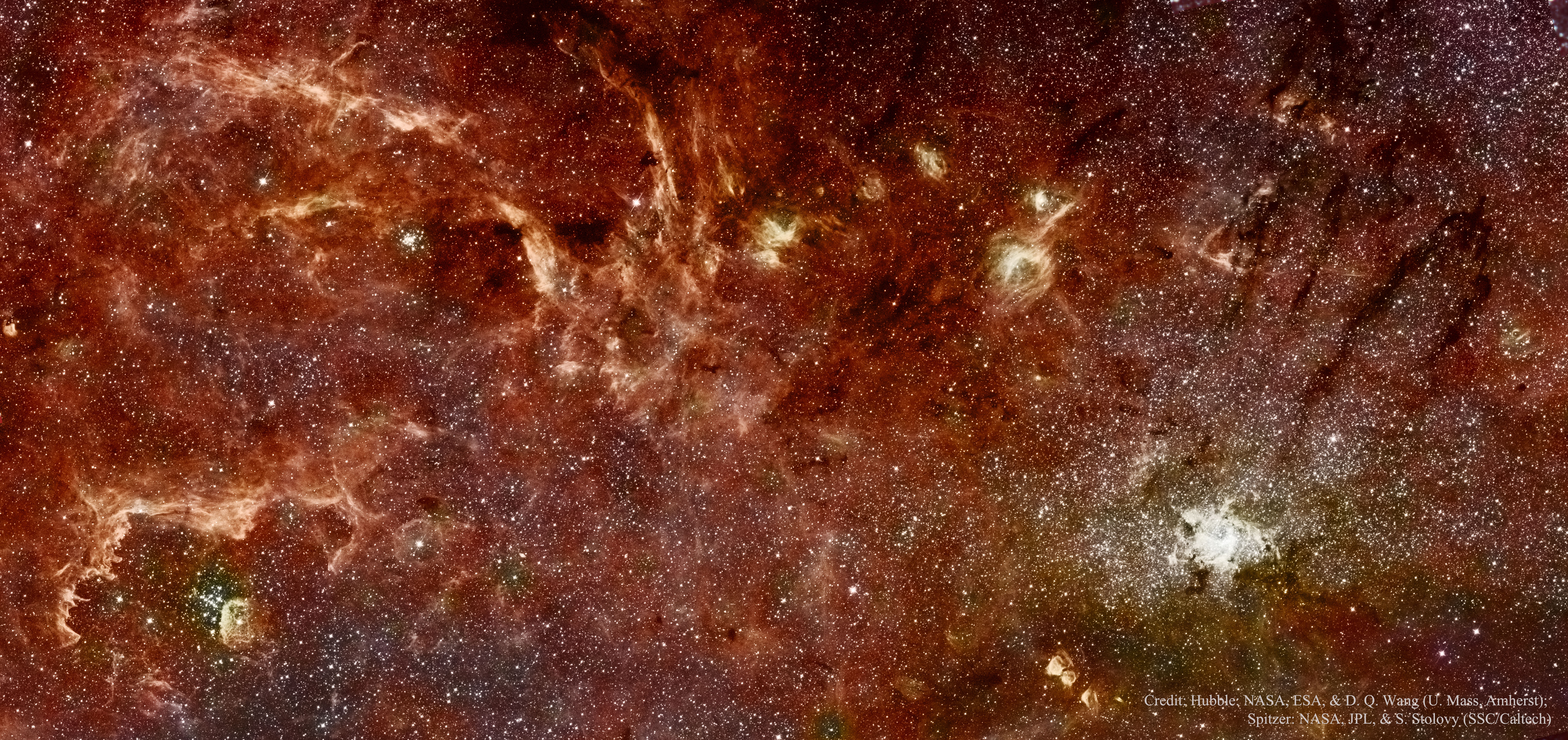
Copyright:
中文翻譯:
在我們的銀河系中心發生了什麼?為了探尋答案,環繞的哈伯太空望遠鏡(Hubble)和斯皮策太空望遠鏡(Spitzer)結合了他們的力量,以前所未有的細緻度在紅外線光下對這個區域進行了調查。紅外線光特別適合用來探測銀河系的中心,因為可見光在塵埃的遮掩下更難穿透。
上述的影像融合了2008年哈伯太空望遠鏡NICMOS拍攝的超過2,000張圖片。該圖像涵蓋了300 x 115光年的範圍,解析度極高,讓我們可以辨識出只有是我們太陽系20倍大小的結構。影像中可見發光的氣體雲和黑暗的塵埃,以及三個大型星團。
在左上方的阿喀琉斯星團(Arches Cluster)附近,磁場可能正在引導等離子體,而下方的五重星團(Quintuplet Cluster)附近,強勁的恆星風正在雕刻出柱狀結構。在右下方,可以看到圍繞著射手座 A*(Sagittarius A*)的巨大中心星團。為什麼有幾顆明亮而龐大的中心恆星似乎與這些星團無關,仍然沒有明確的解釋。
#銀河系 #哈伯太空望遠鏡 #斯皮策太空望遠鏡 #射手座A #紅外線探測 #宇宙探索 #星團 #天文學 #科學探索 #太空奧秘
原文:
What’s happening at the center of our Milky Way Galaxy? To help find out, the orbiting Hubble and Spitzer space telescopes have combined their efforts to survey the region in unprecedented detail in infrared light. Infrared light is particularly useful for probing the Milky Way’s center because visible light is more greatly obscured by dust. The above image encompasses more than 2,000 images from the Hubble Space Telescope’s NICMOS taken in 2008. The image spans 300 by 115 light years with such high resolution that structures only 20 times the size of our own Solar System are discernable. Clouds of glowing gas and dark dust as well as three large star clusters are visible. Magnetic fields may be channeling plasma along the upper left near the Arches Cluster, while energetic stellar winds are carving pillars near the Quintuplet Cluster on the lower left. The massive Central Cluster of stars surrounding Sagittarius A* is visible on the lower right. Why several central, bright, massive stars appear to be unassociated with these star clusters is not yet understood. Follow APOD on: Facebook, Google Plus, or Twitter
來源:NASA每日圖片


